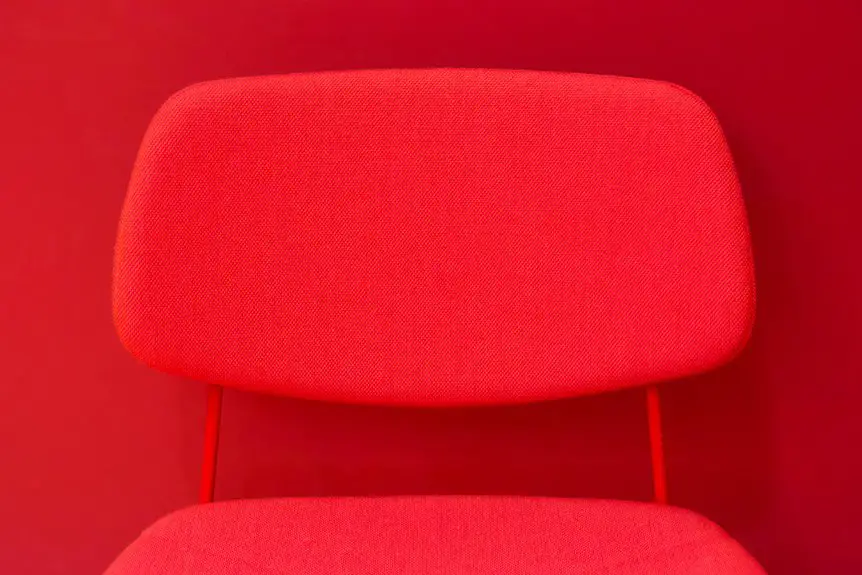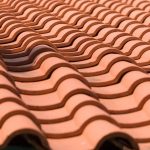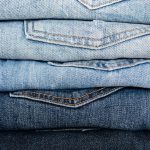When you use scrim fabric in upholstery, you’re adding a lightweight, supportive layer between the outer fabric and padding that prevents stretching, tearing, and sagging. This backing reinforces your furniture, distributes stress evenly, and keeps the fabric smooth and durable under everyday wear. You can choose from natural and synthetic types to match your needs. If you want to guarantee your upholstery lasts longer and stays sturdy, you’ll find plenty of helpful tips ahead on selecting and applying scrim properly.
Table of Contents
Key Takeaways
- Scrim fabric is a lightweight, loosely woven backing used to reinforce upholstery layers and prevent fabric stretching and tearing.
- It provides structural support between outer fabric and padding, enhancing durability and maintaining furniture shape.
- Common scrim types include natural fibers like cotton and jute, and synthetics such as polyester for strength and flexibility.
- Proper application involves stretching scrim taut, securing with staples or adhesive, and overlapping seams for added reinforcement.
- Using scrim fabric increases upholstery longevity by distributing stress evenly and protecting against wear, sagging, and seam damage.
What Is Scrim Fabric?
Scrim fabric is a lightweight, loosely woven material often used in upholstery to add strength and stability without bulk.
When you work with upholstery, you’ll find scrim acts as a supportive backing that reinforces fabric layers. It’s thin but durable, so it helps prevent stretching and tearing over time.
You won’t notice scrim on the surface since it’s tucked between the upholstery fabric and padding. It’s designed to maintain the fabric’s shape while keeping your cushions and furniture looking neat.
Using scrim also makes your upholstery more resilient to daily wear.
When you handle scrim fabric, you’ll appreciate how it balances flexibility with reinforcement, making it an essential component for long-lasting, high-quality upholstery projects.
Types of Scrim Fabric Used in Upholstery
Although you mightn’t see it, the type of scrim fabric you choose can greatly impact your upholstery’s durability and feel.
The choice of scrim fabric subtly shapes how your upholstery wears and feels over time.
Commonly, scrim fabrics come in natural fibers like cotton or jute, and synthetic options such as polyester or nylon.
Cotton scrim is breathable and soft, making it ideal for delicate or traditional furniture.
Jute scrim offers strength and a rustic texture but can be less flexible.
On the other hand, polyester and nylon scrims provide excellent resistance to stretching and moisture, perfect for high-traffic pieces.
You’ll also find blended scrims combining natural and synthetic fibers, striking a balance between comfort and durability.
Selecting the right scrim fabric depends on your upholstery’s purpose and the environment it will face.
How Scrim Fabric Enhances Upholstery Durability
You’ll find that scrim fabric adds essential reinforcement to your upholstery, boosting its overall strength.
It helps resist tears and withstands daily wear much better than materials without it.
Reinforcement and Strength
When you want your upholstery to stand up to daily wear and tear, reinforcing its foundation is key. Scrim fabric acts as a strong backing layer, giving your furniture extra support where it matters most.
By integrating scrim, you prevent the upholstery materials from stretching or sagging prematurely. This stable base helps maintain the shape and firmness of cushions and covers, so they look and feel good longer.
The tightly woven fibers of scrim distribute stress evenly, reducing strain on delicate fabrics and seams. When you use scrim fabric, you’re fundamentally strengthening your upholstery from the inside out, making it more resilient without adding bulk or stiffness.
This reinforcement guarantees your furniture maintains its structure and comfort through regular use.
Tear and Wear Resistance
Because scrim fabric reinforces upholstery from within, it greatly boosts your furniture’s ability to resist tears and everyday wear. This backing material acts like an internal shield, distributing stress across the fabric and preventing weak spots from developing.
When you choose upholstery with scrim fabric, you’re investing in long-lasting durability that handles daily use without compromising appearance.
Here’s how scrim fabric enhances tear and wear resistance:
- Adds structural support to delicate fabrics
- Prevents fabric stretching and distortion
- Minimizes risk of punctures and rips
- Maintains fabric shape under pressure
- Extends overall lifespan of upholstery
The Role of Scrim Fabric in Upholstery Construction
When you build upholstery, scrim fabric plays a key role by strengthening the layers beneath the surface.
It helps hold everything together, so your fabric resists wear and tear longer.
You’ll find scrim makes your upholstery more durable and reliable over time.
Strengthening Upholstery Layers
Although scrim fabric often goes unnoticed, it plays an essential role in strengthening upholstery layers by providing added support and durability.
When you use scrim, you enhance the structural integrity of the upholstery, preventing sagging and deformation over time. It acts as a reinforcing barrier between the outer fabric and the underlying padding.
Here’s what scrim fabric helps you achieve in upholstery construction:
- Distributes stress evenly across the surface
- Prevents fabric stretching and distortion
- Supports padding to maintain shape
- Enhances resistance to tearing and wear
- Provides a stable base for stitching and tufting
Enhancing Fabric Durability
Since upholstery fabric faces constant use and friction, scrim fabric plays an essential role in boosting its durability. When you add scrim as a backing, it reinforces the fabric, preventing tears and wear from daily use.
This lightweight, woven material distributes stress evenly, so your upholstery holds up longer even under frequent pressure. You’ll notice that scrim also helps maintain the fabric’s shape, reducing sagging and stretching over time.
By enhancing resilience, it extends the lifespan of your furniture, saving you from premature replacements. Whether you’re upholstering a chair or sofa, incorporating scrim fabric guarantees the surface stays intact and looking fresh.
In short, scrim acts as a protective layer, keeping your upholstery strong and durable through years of use.
Comparing Scrim Fabric to Other Backing Materials
While exploring upholstery options, you’ll find that scrim fabric offers unique benefits compared to other backing materials. Unlike foam or batting, scrim is lightweight yet strong, providing structural support without bulk.
Compared to traditional canvas or muslin, scrim allows better breathability, which helps maintain fabric texture and comfort. It’s also more flexible than stiff interfacings, adapting well to curved furniture shapes. When you compare scrim to adhesive backings, scrim avoids potential damage from glue residues.
Consider these points when choosing your backing material:
- Lightweight for easier handling
- High tensile strength for durability
- Breathability to prevent moisture buildup
- Flexibility to fit various shapes
- Non-adhesive nature to protect fabric integrity
Scrim fabric balances support and subtlety, making it a smart choice for many upholstery projects.
Benefits of Using Scrim Fabric in Furniture Upholstery
You’ll find scrim fabric boosts your furniture’s durability by providing strong support and improving fabric stability.
It’s also a cost-effective option that doesn’t compromise quality.
Let’s explore how these benefits make scrim a smart choice for upholstery projects.
Enhanced Durability Support
Although scrim fabric often goes unnoticed beneath upholstery, it plays an essential role in reinforcing furniture and extending its lifespan.
When you use scrim as a backing material, you boost the overall durability of your furniture by strengthening weak points and preventing premature wear. It acts as a protective barrier that supports fabric tension and reduces stress on seams.
Here’s how scrim enhances durability:
- Adds tear resistance to delicate fabrics
- Distributes pressure evenly across surfaces
- Prevents fabric stretching and sagging
- Shields upholstery from friction damage
- Reinforces seams and joints for lasting stability
Cost-Effective Material Choice
Because scrim fabric strengthens upholstery without adding significant cost, it offers a smart, budget-friendly solution for furniture makers and buyers alike. You get reliable reinforcement without paying a premium, making it easier to keep projects affordable. This material’s low price doesn’t compromise quality, letting you balance durability and cost effectively.
| Feature | Benefit | Impact |
|---|---|---|
| Low material cost | Reduces overall expense | Saves your budget |
| Easy to source | Quick procurement | Speeds up production |
| Lightweight | Less shipping cost | Cuts transportation fees |
Choosing scrim means you maintain high standards while controlling costs, making it a wise choice for upholstery backing.
Improved Fabric Stability
Beyond saving money, scrim fabric plays a key role in enhancing the stability of upholstery fabrics.
When you use scrim as a backing, it reinforces the main fabric, preventing stretching and sagging over time. This means your furniture maintains its shape and looks fresh longer.
Scrim’s sturdy weave distributes tension evenly, reducing wear and tear.
Here’s how scrim improves fabric stability:
- Adds structural support to delicate fabrics
- Prevents deformation caused by daily use
- Enhances resistance to tears and rips
- Maintains fabric tension for a smooth finish
- Extends the lifespan of upholstery materials
How to Choose the Right Scrim Fabric for Your Project
What factors should you consider when choosing scrim fabric for your upholstery project?
First, assess the weight and durability—heavier scrim works best for high-traffic furniture, providing stronger support.
Next, check the fiber content; natural fibers like cotton breathe well but may wear faster, while synthetic fibers offer greater strength and resistance.
Also, consider the weave tightness; a tighter weave enhances stability and prevents fabric distortion.
Don’t forget compatibility—ensure the scrim fabric matches the type of upholstery material you’re using to avoid issues like puckering.
Finally, think about ease of handling; some scrims are more flexible, making your work smoother.
Techniques for Applying Scrim Fabric in Upholstery
Once you’ve selected the right scrim fabric, applying it correctly guarantees your upholstery holds up well over time. Start by cutting the scrim slightly larger than the area you’re covering to allow for secure attachment.
Choosing and applying scrim fabric properly ensures your upholstery remains durable and well-supported over time.
Use a strong adhesive or staple gun to fasten the fabric smoothly, avoiding wrinkles or folds. Always overlap seams to reinforce strength.
Here are key techniques to keep in mind:
- Cut scrim with precision for a clean fit
- Stretch fabric taut before securing
- Use staples or upholstery adhesive firmly
- Overlap edges by at least an inch
- Trim excess fabric after attachment
Following these steps assures your scrim backing supports the upholstery evenly, enhancing durability and maintaining fabric integrity.
Common Challenges When Working With Scrim Fabric
Although scrim fabric offers great support in upholstery, you’ll often face challenges like fraying edges and difficulty keeping it taut. Handling scrim requires patience and the right tools to prevent these common issues. You might also struggle with aligning it properly or securing it without damaging the delicate weave.
| Challenge | Tip to Overcome |
|---|---|
| Fraying edges | Use pinking shears or seal edges |
| Maintaining tension | Stretch evenly, staple incrementally |
| Alignment issues | Mark guidelines before attaching |
| Fabric tearing | Handle gently, avoid sharp tools |
| Staple damage | Use fine staples and low pressure |
Caring for Upholstered Furniture With Scrim Backing
When you care for upholstered furniture with scrim backing, you’ll want to handle it gently to preserve the fabric’s integrity.
Scrim adds stability but is delicate, so regular maintenance prevents damage. Here’s how to keep your piece in great shape:
- Vacuum gently using a soft brush attachment to remove dust.
- Avoid harsh chemicals; opt for mild upholstery cleaners.
- Address spills immediately by blotting with a clean cloth.
- Keep furniture out of direct sunlight to prevent fading and weakening.
- Rotate cushions regularly to distribute wear evenly.
Frequently Asked Questions
Can Scrim Fabric Be Used in Outdoor Upholstery Projects?
Imagine scrim fabric as a sturdy umbrella; it’s great indoors but not built for rain. You shouldn’t use it outdoors since it lacks water resistance, so pick materials designed to brave the elements instead.
Is Scrim Fabric Environmentally Friendly or Recyclable?
You’ll find that scrim fabric’s environmental impact depends on its material—natural fibers are more eco-friendly and recyclable, while synthetic scrims may not be. Always check the specific type to verify it aligns with your sustainability goals.
How Does Scrim Fabric Affect the Cost of Upholstery?
Back in the day, you’d find scrim fabric helps keep upholstery costs down by adding strength without bulk. You’ll appreciate its affordability and durability, letting you stretch your budget while still getting quality results.
Are There Any Safety Concerns With Scrim Fabric in Upholstery?
You don’t need to worry much about safety concerns with scrim fabric in upholstery. It’s usually treated to be flame-resistant and non-toxic, so it won’t pose health risks or fire hazards in your furniture.
Can Scrim Fabric Be Dyed or Customized in Color?
Think of scrim fabric like a blank canvas; while you can dye it, its tight weave limits color absorption. So, you’ll find customization options are subtle, not vibrant, keeping its primary role functional rather than decorative.
- How to Keep Percale Sheets From Wrinkling: Pro Tips - July 15, 2025
- How to Keep Cotton Percale Sheets Bright White - July 15, 2025
- How to Iron Percale Sheets for a Perfectly Crisp Finish - July 15, 2025







